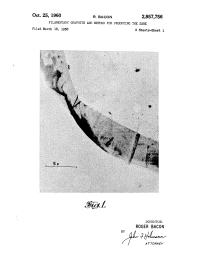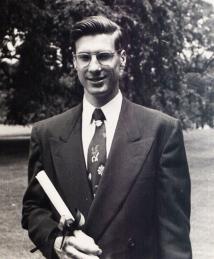Roger Bacon
In 1958, Roger Bacon's chance discovery revolutionized industries and became a multibillion-dollar-a-year business. While measuring the triple point of graphite (the temperature and pressure where solid, liquid and gas are in thermodynamic equilibrium), Bacon observed whiskers of perfect graphite. These whiskers, up to an inch long and only one-tenth the diameter of a human hair, launched the age of high-performance carbon fibers. Bacon and colleagues at Union Carbide's Parma Technical Center began researching applications for his breakthrough after his discovery.
During the 1960s, the U.S. Air Force supported the research, recognizing their use in a new generation of stiff, high-strength composites for rocket nozzles, missile nose tips and aircraft structures. Carbon fibers quickly became and remain important aerospace materials. Military aircraft utilize carbon fibers for the fuselage frame, doors, spars on wings and skin panels. Applications have expanded into civil engineering, sports, specialty automobiles and many consumer products. Bacon's pioneering work has also been cited as the forerunner of multiwalled carbon nanotubes.
Bacon earned his bachelor of arts degree from Haverford College and his doctorate from Case Institute of Technology, which later merged with Western Reserve University to become Case Western Reserve University.

